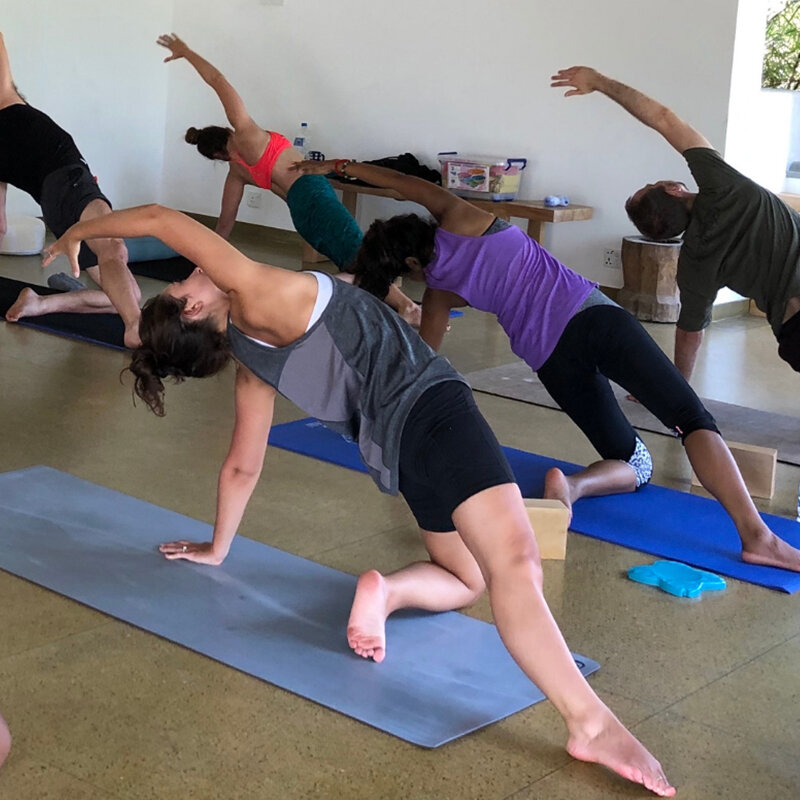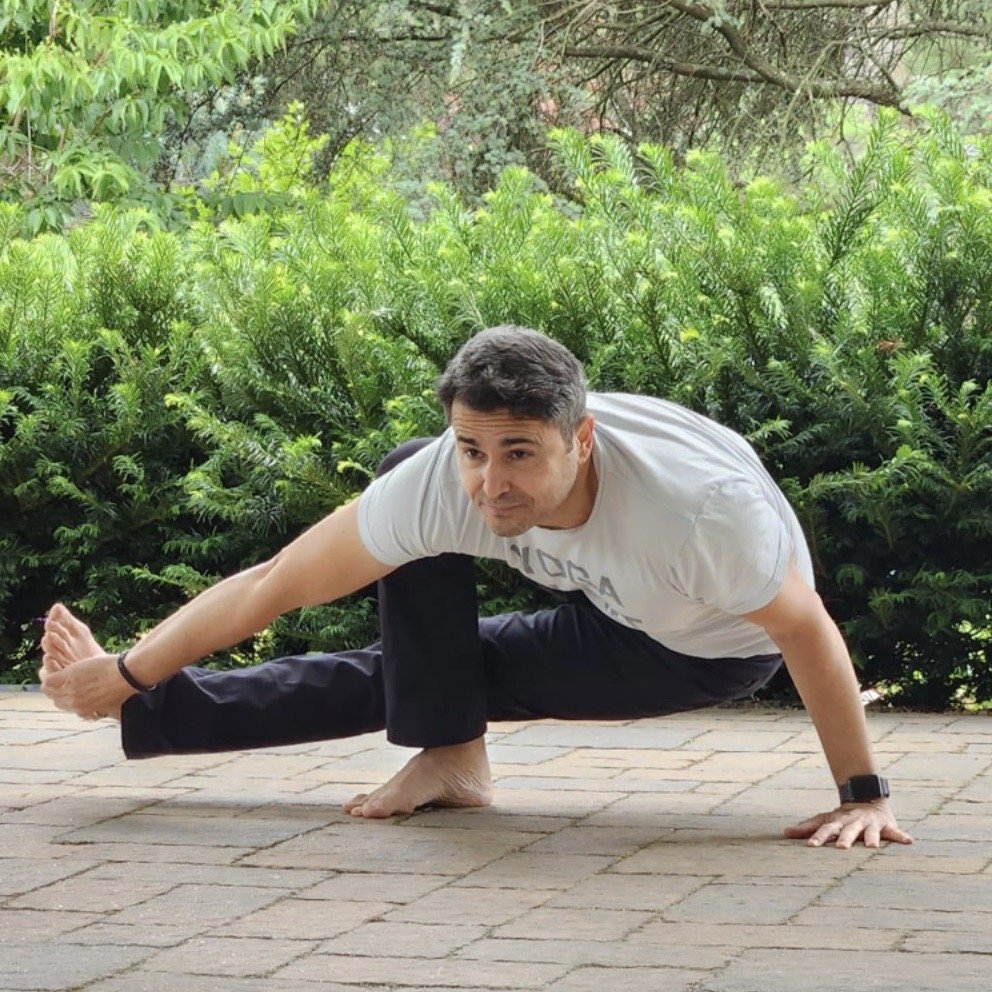Introduction to Vinyasa Flow Yoga
Understanding the Basics
Vinyasa Flow Yoga, often referred to simply as Vinyasa, is a dynamic and fluid form of yoga that emphasizes the coordination of movement and breath. Vinyasa comes from the Sanskrit root words “nyasa,” meaning “to place,” and “vi,” meaning “in a special way.” Understanding these elements helps illuminate the essence of Vinyasa Flow Yoga, where transitions between poses are as important as the poses themselves.
In a Vinyasa Flow class, each movement is synchronized with an inhalation or exhalation, creating a seamless flow from one pose to the next. This method contrasts with other styles of yoga, such as Hatha, which typically involve holding poses for extended periods. The continuous flow mimics the natural rhythm of breathing, making the practice feel more organic and meditative.
Vinyasa Flow Yoga can be tailored to all levels of practitioners, from beginners to advanced yogis. Instructors often offer modifications and variations, enabling everyone to practice at their own pace. The fluid nature of Vinyasa means that classes can be gentle and restorative or vigorous and challenging, depending on the sequencing and pace set by the teacher.

Historical Context
While Vinyasa Flow Yoga is a modern practice, it is deeply rooted in ancient yoga traditions. Understanding its historical context provides insight into its evolution and continued relevance. Vinyasa traces its origins to the teachings of Krishnamacharya, the father of modern yoga. Krishnamacharya emphasized the importance of linking breath with movement, laying the groundwork for what would become Vinyasa Yoga.
One of Krishnamacharya’s most famous students, Pattabhi Jois, further developed and popularized this style through the Ashtanga Vinyasa system. Ashtanga Vinyasa presents a series of predetermined sequences that follow a specific order, emphasizing breath coordination and fluid movement. Over time, Vinyasa Flow emerged as a more flexible adaptation of Ashtanga, allowing for creative sequencing and varied pace.
The 1960s and 1970s saw the rise of yoga in the West, where Vinyasa Flow gained immense popularity. Influential teachers like Shiva Rea and Beryl Bender Birch introduced Vinyasa to a global audience, blending traditional principles with contemporary practices. Their teachings highlighted the adaptable nature of Vinyasa, making it accessible and appealing to a broad range of practitioners.

Core Principles of Vinyasa Flow Yoga
Breath and Movement Synchronization
A fundamental principle of Vinyasa Flow Yoga is the synchronization of breath and movement. Understanding this principle is key to unlocking the practice’s full potential. Each inhalation and exhalation corresponds to a specific movement or transition between poses. This synchronization creates a fluid, almost dance-like, sequence that flows seamlessly from one posture to the next.
The emphasis on breath, known as “pranayama,” serves multiple purposes. Firstly, it helps maintain focus and awareness, keeping the mind anchored in the present moment. This meditative quality differentiates Vinyasa from other physical exercise routines, making it a holistic practice for body and mind. Secondly, synchronizing breath with movement ensures that muscles receive adequate oxygen, enhancing endurance and performance.
In practice, a Vinyasa session typically begins with “Sun Salutations,” a series of poses designed to warm up the body. Each movement in a Sun Salutation is linked with either an inhalation or exhalation, setting the rhythmic tone for the rest of the class. As the session progresses, the sequences become more complex, building heat and flexibility while maintaining the breath-movement connection.

Importance of Transitions
Another core principle of Vinyasa Flow Yoga is the importance of transitions between poses. Understanding this principle enhances the fluidity and grace of your practice. In Vinyasa, the transitions are just as significant as the poses themselves. This focus on seamless movement sets Vinyasa apart from other yoga styles that may emphasize static holds.
Transitions, often referred to as “vinyasas,” include specific movements like “Chaturanga,” “Upward-Facing Dog,” and “Downward-Facing Dog.” These poses act as bridges connecting different asanas, maintaining the flow and continuity of the practice. Proper execution of transitions ensures that the body remains engaged and aligned, reducing the risk of injury and enhancing overall effectiveness.
The emphasis on transitions also cultivates mindfulness and presence. Each movement requires focus and intentionality, encouraging practitioners to remain aware of their body and breath throughout the entire practice. This mindfulness extends beyond the mat, promoting a sense of fluidity and grace in daily life.

Benefits of Vinyasa Flow Yoga
Physical Benefits
Practicing Vinyasa Flow Yoga offers a myriad of physical benefits that contribute to overall health and well-being. Understanding these benefits can motivate individuals to incorporate Vinyasa into their regular fitness routine. One of the most notable benefits is increased flexibility. The dynamic sequences and varied poses help stretch and lengthen muscles, improving range of motion and reducing stiffness.
Another significant physical benefit is enhanced strength. Vinyasa Flow Yoga engages multiple muscle groups, including the core, arms, legs, and back. Holding poses and transitioning between them requires muscular endurance and stability, leading to increased muscle tone and strength over time. This full-body engagement makes Vinyasa an effective complement to other forms of exercise, such as strength training or cardiovascular workouts.
Vinyasa Flow Yoga also improves cardiovascular health. The continuous movement and breath coordination elevate the heart rate, providing a mild aerobic workout. This can enhance cardiovascular endurance, promoting better heart health and circulation. Additionally, the emphasis on breath control can improve lung capacity and respiratory efficiency.
Another key physical benefit of Vinyasa Flow Yoga is improved balance and coordination. The practice involves a variety of poses that challenge stability and proprioception, helping enhance overall balance and body awareness. This improved coordination can translate to better performance in other physical activities and reduce the risk of falls or injuries.

Mental and Emotional Benefits
Beyond the physical advantages, Vinyasa Flow Yoga offers substantial mental and emotional benefits. Understanding these aspects can provide a holistic perspective on the practice’s transformative power. One of the most significant mental benefits is stress reduction. The synchronization of breath and movement creates a meditative flow, helping to calm the mind and reduce anxiety. Focusing on the present moment during practice encourages mindfulness, promoting a sense of inner peace.
Another notable benefit is improved mental clarity and focus. The continuous flow of poses requires concentration and awareness, helping to sharpen cognitive functions. This heightened focus can extend beyond the yoga mat, enhancing productivity and decision-making in daily life. Practitioners often find that regular Vinyasa practice enhances their ability to concentrate and remain present in various activities.
Emotional balance is another key benefit of Vinyasa Flow Yoga. The practice encourages the release of pent-up emotions and stress, fostering a sense of emotional release and balance. The physical act of moving through poses can help release tension stored in the body, promoting emotional well-being. Additionally, the emphasis on breath control can help regulate the nervous system, reducing symptoms of anxiety and depression.
Getting Started with Vinyasa Flow Yoga
Finding the Right Class
Starting your Vinyasa Flow Yoga journey begins with finding the right class. Understanding what to look for can help you choose a class that suits your needs and preferences. One important factor to consider is the level of difficulty. Vinyasa classes can range from beginner to advanced, so selecting a class that matches your experience and fitness level is crucial. Many studios offer beginner classes designed to introduce the fundamentals of Vinyasa Flow.
The instructor’s teaching style is another key consideration. Different instructors have unique approaches to Vinyasa, so finding a teacher whose style resonates with you can enhance your practice. Some instructors may emphasize a fast-paced, energetic flow, while others may focus on a slower, more mindful practice. Attending a few classes with different instructors can help you find the right fit.
Class size and atmosphere also play a significant role. Smaller classes often provide more personalized attention and adjustments, which can be beneficial for beginners. The studio’s atmosphere, including its cleanliness, lighting, and overall vibe, can impact your overall experience. A welcoming and comfortable environment can make your practice more enjoyable and effective.
Preparing for Your First Class
Preparing for your first Vinyasa Flow Yoga class involves a few essential steps to ensure a positive experience. Understanding these steps can help you feel more confident and prepared. First, choose appropriate clothing that allows for freedom of movement. Breathable, moisture-wicking fabrics are ideal, as they help keep you comfortable during the practice. Form-fitting apparel can prevent excess fabric from getting in the way during transitions and poses.
Next, bring your own yoga mat if possible. While most studios provide mats, having your own ensures familiarity and comfort. A non-slip mat is particularly important for Vinyasa, as the continuous movement and potential for sweat can make surfaces slippery. Additionally, consider bringing a towel and a water bottle to stay hydrated and manage perspiration.
Arrive at the studio a few minutes early to familiarize yourself with the space and settle in. This extra time allows you to find a comfortable spot, check in with the instructor, and center yourself before the class begins. Inform the instructor if you have any injuries or specific concerns so they can offer modifications as needed.
Understanding the sequence of a typical Vinyasa Flow class can also help you feel more prepared. Classes often begin with a gentle warm-up, followed by a series of flowing poses, and concluding with a cool-down and relaxation period. Knowing what to expect can ease any initial nervousness and help you focus on your practice.
What is Vinyasa Flow Yoga?
Vinyasa Flow Yoga is a popular style of yoga that emphasizes fluid movement coordinated with breath. In Sanskrit, “vinyasa” means “to place in a special way,” and in this context, it refers to the sequential movement and transition between poses in a smooth, continuous manner. This dynamic practice is known for its creativity, as instructors often sequence poses in varied sequences to keep the practice engaging and challenging.
Conclusion: Embracing the Flow
Vinyasa Flow Yoga is a dynamic and transformative practice that offers a myriad of physical, mental, and emotional benefits. Understanding its core principles, historical context, and practical aspects can enhance your appreciation and engagement with the practice. Synchronization of breath and movement, coupled with seamless transitions, creates a fluid and meditative flow that fosters overall well-being.
The physical benefits of Vinyasa include increased flexibility, strength, cardiovascular health, and improved balance. Beyond the physical, the practice promotes stress reduction, mental clarity, and emotional balance, making it a holistic approach to health. Starting your Vinyasa journey involves finding the right class and adequately preparing for your practice, ensuring a positive and enriching experience. In 2024, you should also pay more attention to your health.
In conclusion, Vinyasa Flow Yoga is a versatile and accessible practice that caters to all levels. Embracing the flow allows you to experience the harmonious connection between body, mind, and breath. By incorporating Vinyasa into your routine, you can cultivate a balanced, healthy, and fulfilling lifestyle, reaping the benefits of this ancient yet ever-relevant practice.
